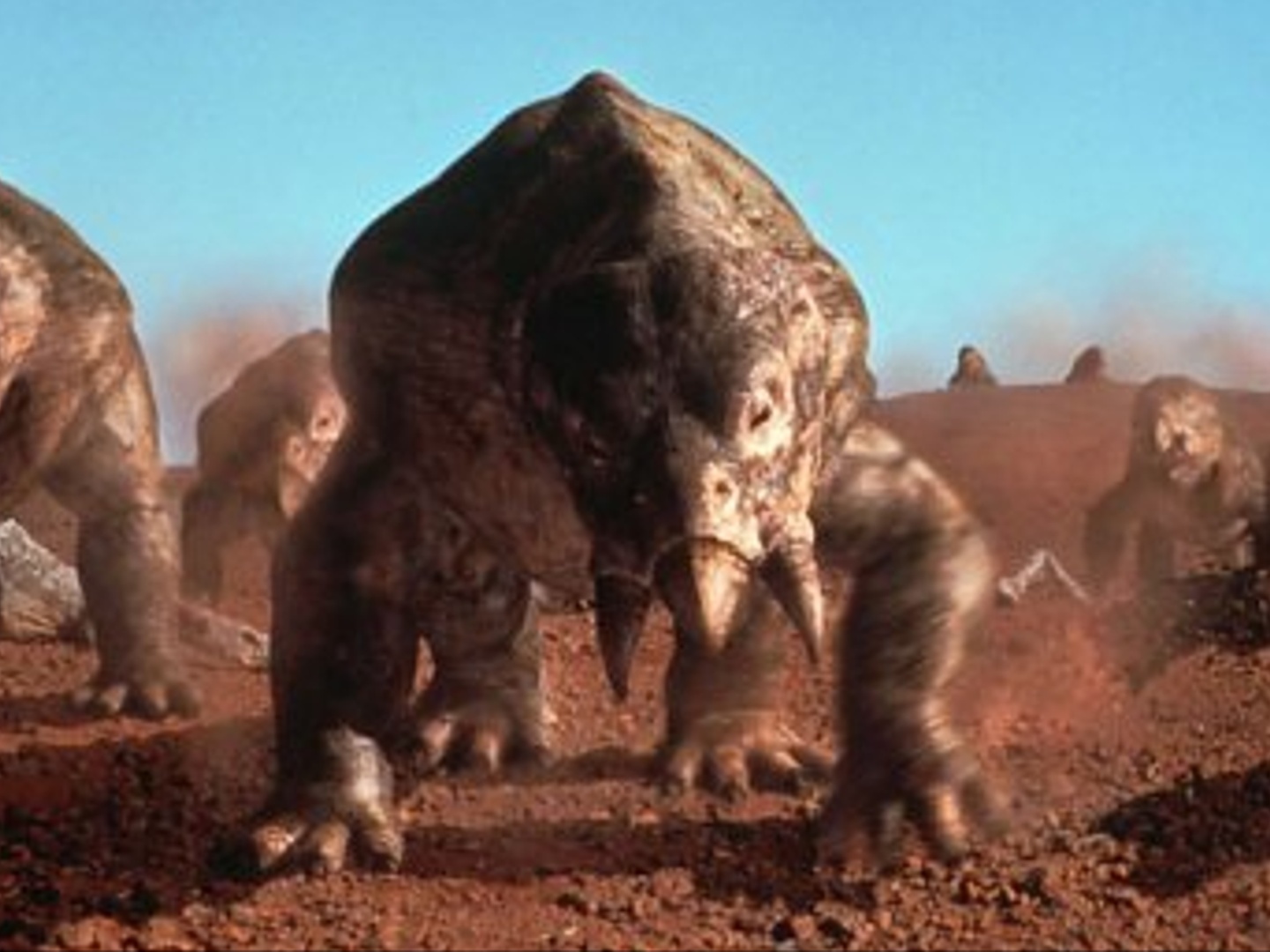Pronunciation:
Plass-eer-ee-as
Geological
Layer: Upper Triassic
Baramin:
Dicynodonts?
Habitat:
Triassic Floodplains
Era:
Pre-Flood-Post-Flood, 6,000-? years ago
Pre-Fall
Diet: Plants
Post-Fall
Diet: Plants
Length:
11 ft.
Height:
4 ft. (at the shoulder)
Weight:
1 ton
Description:
As a Triassic reptile, Placerias was one of the
largest plant eaters in its environment. It is part of a great
infraorder of creatures known as dicynodonts. It had a barrel-like
body, pillar-like legs and a powerful and compact neck. This animal
is also known for its short but sharp pair of tusks that were used
for defense or inter-specific display.
History:
Over
40 Placerias individuals were
discovered in a site discovered in 1930. The site is known as the
“Placerias Quarry” and is located near St. Johns, which is
southeast of the Petrified Forest of Arizona. Placerias
was discovered in 1904.
Taxonomy:
Placerias,
despite its appearance, is not a dinosaur, but a dicynodont or
mammal-like reptile (even though this creature was unrelated to
mammals in every way). Dicynodonts are probably this creature's
baramin. It is a close relative of the larger Ischigualastia
from South America.
Paleobiology:
Based
on its body-build, Placerias
might have lived somewhat like a hippo, but possibly more land-bound.
It is presumed that herds of these animals lounged in the water
and/or roamed across the Triassic landscape using their tusks to dig
up roots and using their beaks to eat any other vegetation that
looked appetizing. God designed their beaks for snapping through
thick branches of low-growing plants. The tusks would have also been
useful in fighting amongst other Placerias
– perhaps two males would use them to fight over a female – and
to defend themselves against predators. Because of their large size,
not much would attack a full-grown Placerias,
but they weren't invincible; it's likely that these reptiles were
preyed upon by packs of carnivorous theropod dinosaurs such as
Coelophysis and the
large carnivorous archosaur, Postosuchus.
Placerias
made its home in the Triassic floodplains of the southeastern portion
of the U.S. Many of its fossils have been discovered in Arizona.
Being a land animal, a male and female pair of Placerias
(or one of Placerias' relations) went aboard Noah's Ark
4,350 years ago before Noah's Flood wiped the earth clean of every
air-breathing terrestrial creature and all the humans except Noah and
his family. Placerias went extinct either due to environmental
stress and/or human interference (e.g. hunting and/or habitat
disturbance) soon after the Flood. Since there don't appear to be
many (if any), dragon legends involving creatures similar to
Placerias, it is likely that they beat the dinosaurs to
extinction, as dinosaur-like creatures appear in numerous dragon
legends.
Popular
Culture:
Placerias
has made its appearance in the first episode of the BBC series
Walking with Dinosaurs
(1999). In the documentary, this reptile is depicted as living in
large herds and are often stalked by a female Postosuchus;
in one instance, she successfully brings one down. Later in the show,
the Postosuchus
becomes wounded by the tusks of a Placerias.









No comments:
Post a Comment